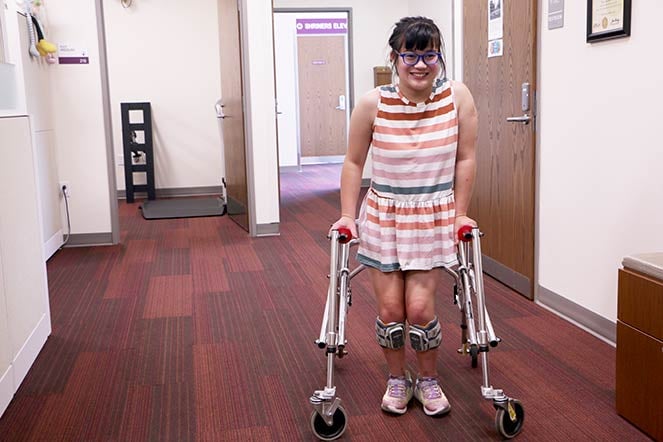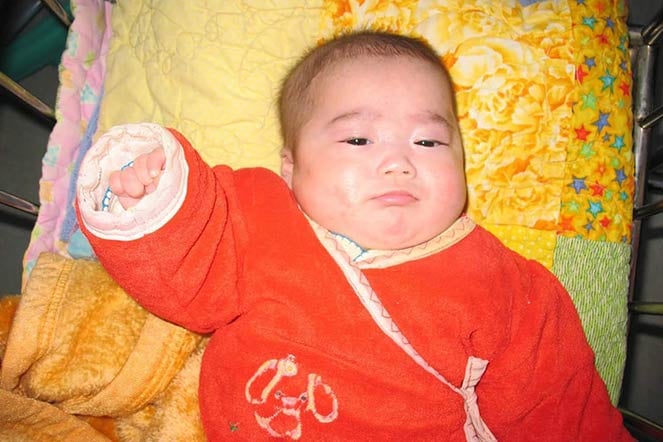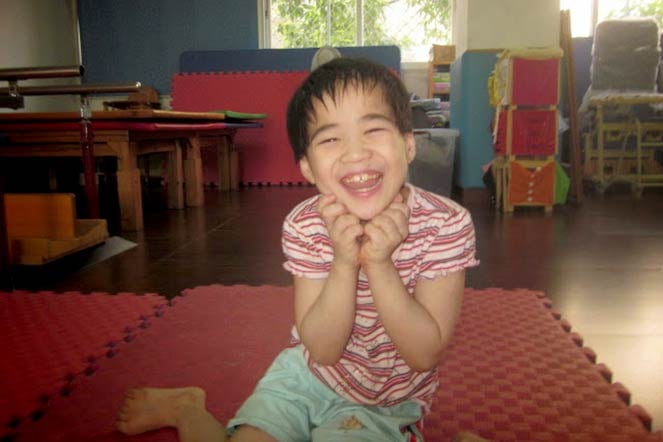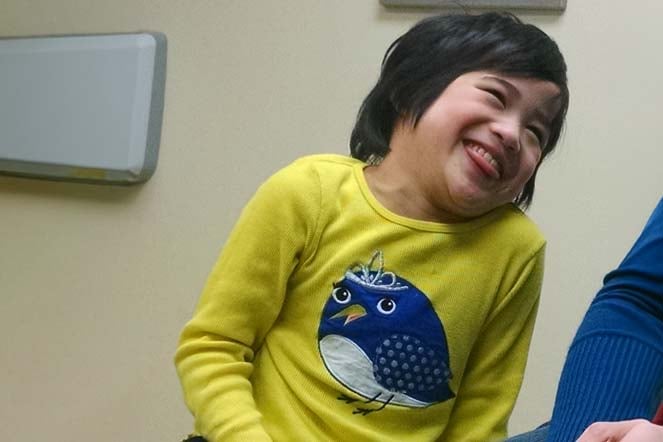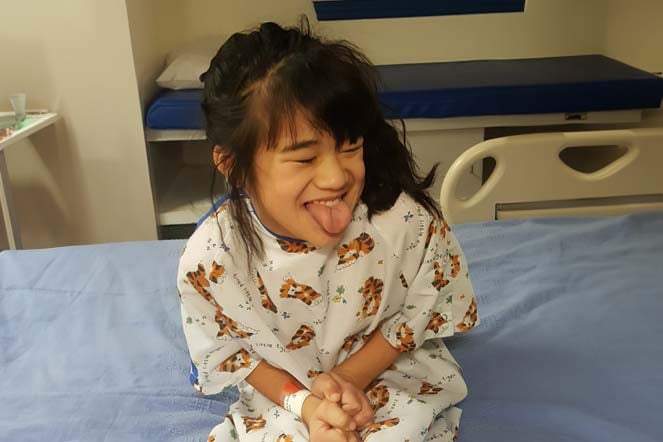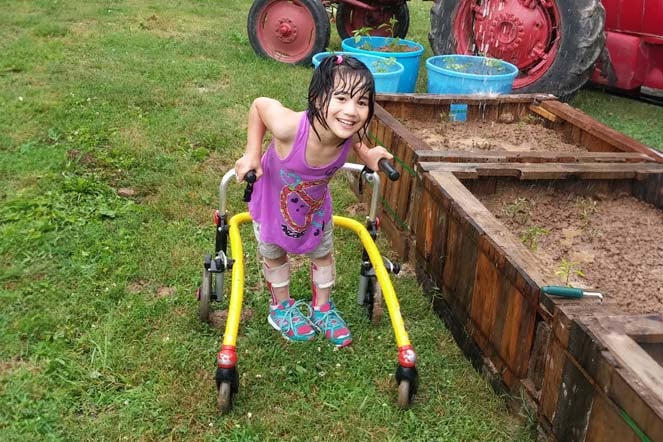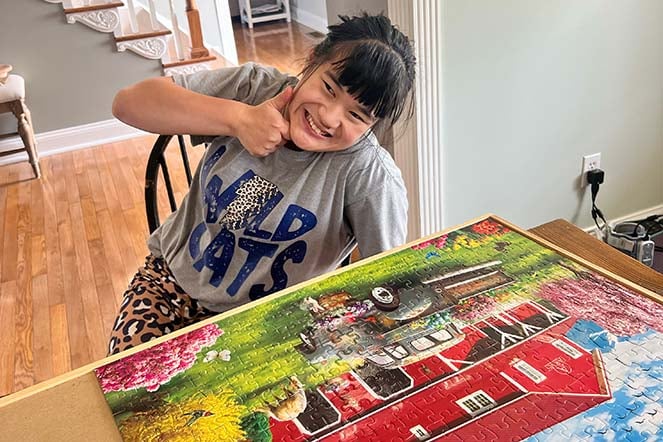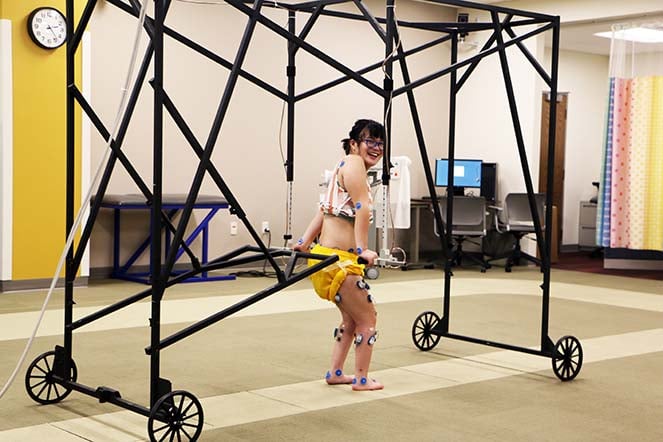Conectarse con la atención médica
A Erica le diagnosticaron parálisis cerebral cuando tenía 4 años, cuando estaba viviendo en un orfanato superpoblado de niños, en China.
"A Erica la encontraron de bebé frente a un hospital en China, posiblemente el mismo día que nació", dijo Eve, la madre de Erica. "Es probable que la parálisis cerebral se deba a una falta de atención médica al nacer".
Sus padres, Eve y Jeremy, consideraban la idea de adoptar un hijo o hija con necesidades especiales y comenzaron a mirar fotos de niños que necesitaban hogar. Hojeando los álbumes de fotografías, vieron a Erica. "Lo supe inmediatamente", recordó Eve. "Vi la foto y dije 'Esa es mi hija'".
Así fue como, después de meses de un enrevesado proceso de adopción internacional, Erica llegó a los EE. UU. con sus padres y su hermano mayor. Sus padres la llevaron al Centro de Adopción Internacional de la Universidad de Kentucky, desde donde la remitieron al Hospital Shriners para Niños de Lexington para que recibiera la atención ortopédica relacionada con su parálisis cerebral.
El tratamiento en el Hospital Shriners para Niños de Lexington comenzó con inyecciones regulares para relajar los músculos de las extremidades inferiores. "Apenas dos semanas después de recibir sus primeras inyecciones, ya dio sus primeros pasos sin andador", dijo Eve.
Después de eso, el Dr. Prusick y la Dra. Susan McDowell, MD, continuaron controlando el estado de Erica durante su infancia. Ella utilizaba ortesis de tobillo y pie (AFO), pero seguía cayéndose, así que los médicos recomendaron que fuese a cirugía.
Caminar con más confianza
"El objetivo era mejorar la posición de los pies", dijo el Dr. Prusick. "Antes de la cirugía, Erica tenía los pies apuntando bastante hacia adentro y eso la hacía tropezar. Realizamos osteotomías de las tibias y pudimos alinear sus pies hacia adelante, para así disminuir la interferencia de los pies entre sí".
"Ahora, tras las cirugías, los pies no se arrastran tanto y tiene menos riesgo de caerse", agregó Eve.
El Dr. Prusick también realizó los trámites preliminares para que Erica obtuviera aprobación para usar dispositivos de estimulación eléctrica en las rodillas, que envían señales a los músculos objetivo para que el pie se flexione de manera más apropiada al caminar.
"Los dispositivos han hecho una diferencia increíble" afirmó Eve.
Mirar hacia el futuro
Si bien los avances médicos han sido una parte fundamental del recorrido de Erica, su actitud es igual de importante. "Erica es la alegría personificada", dijo Eve. "Tiene una alegría contagiosa. Llena de alegría a todas las personas que tiene cerca".
Con una sonrisa oreja a oreja, Erica compartió que le gustan los Legos y los rompecabezas. "Le encanta Grogu, un personaje de The Mandalorian, la serie de Disney, también conocido como 'Bebé Yoda'. Tiene la habitación llena de Bebé Yoda" dijo Eve, riendo.
A Erica le gusta jugar baloncesto y béisbol, y asistir a un servicio que ofrece su iglesia diseñado específicamente para personas con necesidades especiales y sus familias.
Para Eve y Jeremy, el Hospital Shriners para Niños de Lexington ha sido un lugar seguro, que ha permitido a la familia explorar opciones nuevas para mejorar la vida de Erica. "Apreciamos el entusiasmo que demuestra Shriners por seguir encontrando formas nuevas de ayudar a Erica", dijo Eve. "Shriners siempre mira hacia el futuro. Como con el estudio de MAC. Toman medidas y a partir de esa información se preguntan "¿Cómo puede la medicina mejorarle la vida?"
